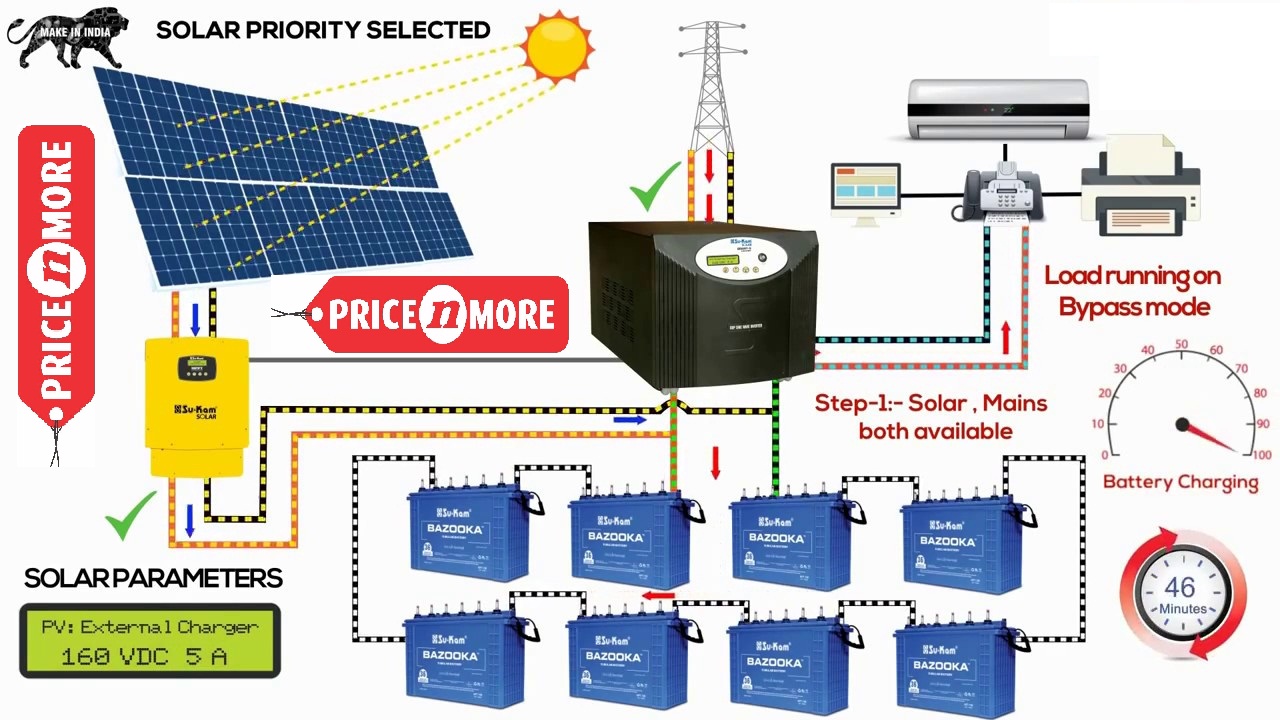
But analysts say that boosting those clean energy levels will not be easy. At the same time, officials have promised that with international assistance India will increase the share of non-fossil-based capacity in its energy mix to 40 percent by 2030, up from 30 percent today. To meet the needs of 1.2 billion citizens, the government plans to double coal extraction to 1.5 billion metric tons by the end of the decade and quadruple its renewable energy capacity. By June, the energy ministry estimated it had already brought about 60 percent of India’s 714,204 unwired villages online. The Indian government plans to expand the central grid and has promised that every citizen will have reliable electricity by 2022. “I’d agree 100 percent this is primarily a development solution, not a climate solution,” said Justin Guay, climate program officer at the David and Lucile Packard Foundation who was previously with the Sierra Club. In fact, in parts of India, microgrids have become a stopgap solution for the energy-poor while they wait for the central grid. The microgrids do not displace coal use because the target villages were never hooked to the central grid in the first place. The fallacy in this position, others argue, is that solar microgrids do not address climate change. They envision a future where 1.3 billion people globally could skip fossil-fuel-fired power plants and enter a prosperous, low-emissions world. Greenpeace, like many environmental groups, argues that these people could be supplied through decentralized solar and other renewable energies. This is mainly because power lines have not reached every village and home. The hitch is that about 400 million Indians, mostly in rural Bihar and Uttar Pradesh, remain without power. The group wants India to stop all new coal mining and coal-fired power plants because the resulting carbon emissions would contribute to climate change. The project was important to Greenpeace’s ambition. Greenpeace wanted to set up a solar village to show the government that it is possible to power rural communities with renewable energy. In 2010, the villagers pooled 45,000 rupees ($680) and asked the local electricity board for a connection, but they never got it.Ī chance encounter last year between the village chief and a Greenpeace activist on a train brought the group to Dharnai. The rich set up rooftop solar panels that supplied a single light bulb or ceiling fan. Perhaps because of this political alliance, the community never regained the electrical supply it lost in 1981. “Similarly, when we did not have real electricity, we had to make do with solar power.”ĭharnai is in the heartland of a guerilla communist movement called Naxalism. “If you don’t find bottled water to drink, you have to settle for water from the hand pump,” he said. Vijay Kumar Das, a line engineer with Dharnai’s electricity committee, compared the village’s solar microgrid experiment to polluted groundwater.

Much of that power would go into the central grid, rather than being disseminated through small, decentralized energy systems. The challenge is coming into focus as Prime Minister Narendra Modi moves forward on an ambitious pledge to generate 175 gigawatts from utility-scale solar and wind energy by 2022 and increase coal-powered generation.

By “fake,” they meant solar.Īnalysts say the story of Dharnai illustrates how difficult it can be to provide reliable, high-quality electricity to the world’s poor without using the central grid. When the former chief minister of Bihar state visited to inaugurate the grid, villagers lined up to protest, chanting, “We want real electricity, not fake electricity!”īy “real,” they meant power from the central grid, generated mostly using coal.

But, residents said, the problems started almost immediately. So when activists with Greenpeace set up a solar-powered microgrid in July of 2014, the excitement was palpable. Today, it is powered by coal.ĭharnai, a community of about 3,200 people in eastern India’s Bihar state, had been without electricity for three decades. DHARNAI, India-One year ago, environmentalists hailed this tiny village as the future of clean energy in rural India.


 0 kommentar(er)
0 kommentar(er)
